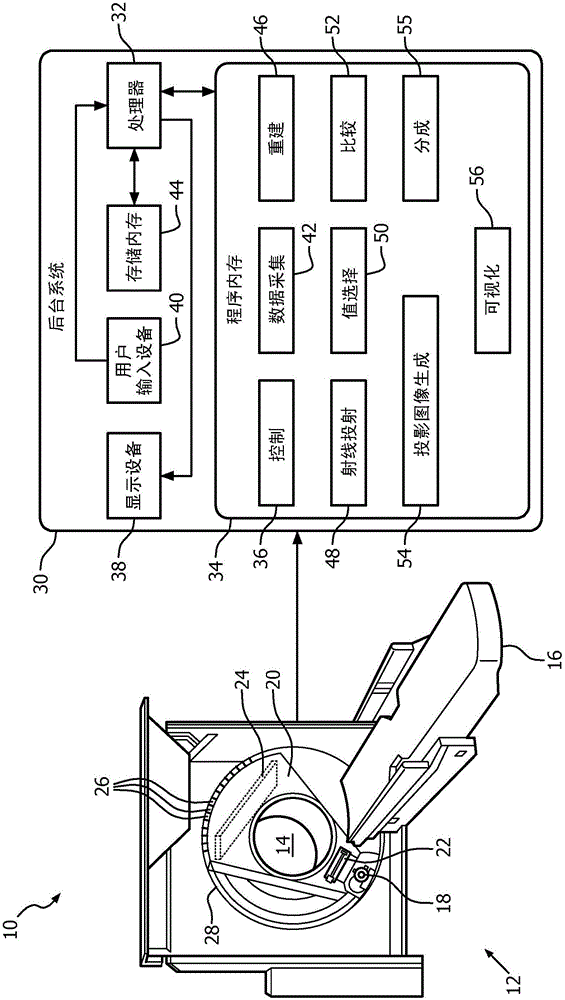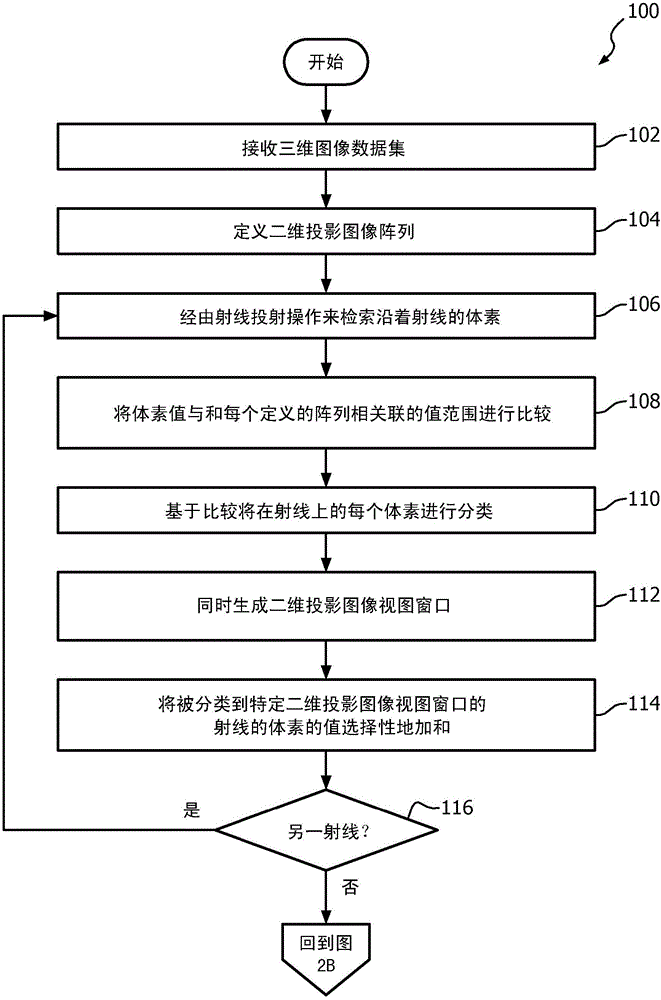Layered two-dimensional projection generation and display
A technology of two-dimensional projection and image projection, applied in the field of diagnostic imaging, which can solve the problem of not allowing two or more types of tissue visualization at the same time, and achieve the effect of high spatial and contrast resolution
- Summary
- Abstract
- Description
- Claims
- Application Information
AI Technical Summary
Problems solved by technology
Method used
Image
Examples
Embodiment 200
[0042] now refer to Figure 3A , receive 202 a three-dimensional dataset 68 or a dataset larger than three dimensions from any scanning modality such as SPECT, CT, PET, MR, and the like. The received data set 68 is used to specify and create 204 a three-dimensional data subset. Projection planes are then defined 206 corresponding to a selected number of planes, eg, the number of planes corresponds to different tissues, different organs, different structures (body, mechanics, electronics, geology, etc.). There is no limit on the number of projection planes that can be specified and calculated.
[0043] The position of the source 70, the position of the central axis and the corresponding position of the projection plane are then defined 208 . A two-dimensional data array of pixels for each projection plane is then defined 210 . For each projection plane, a 212 voxel value selection (mask) function is specified and defined as discussed below. Similarly, for each of the projec...
PUM
 Login to View More
Login to View More Abstract
Description
Claims
Application Information
 Login to View More
Login to View More - R&D
- Intellectual Property
- Life Sciences
- Materials
- Tech Scout
- Unparalleled Data Quality
- Higher Quality Content
- 60% Fewer Hallucinations
Browse by: Latest US Patents, China's latest patents, Technical Efficacy Thesaurus, Application Domain, Technology Topic, Popular Technical Reports.
© 2025 PatSnap. All rights reserved.Legal|Privacy policy|Modern Slavery Act Transparency Statement|Sitemap|About US| Contact US: help@patsnap.com



